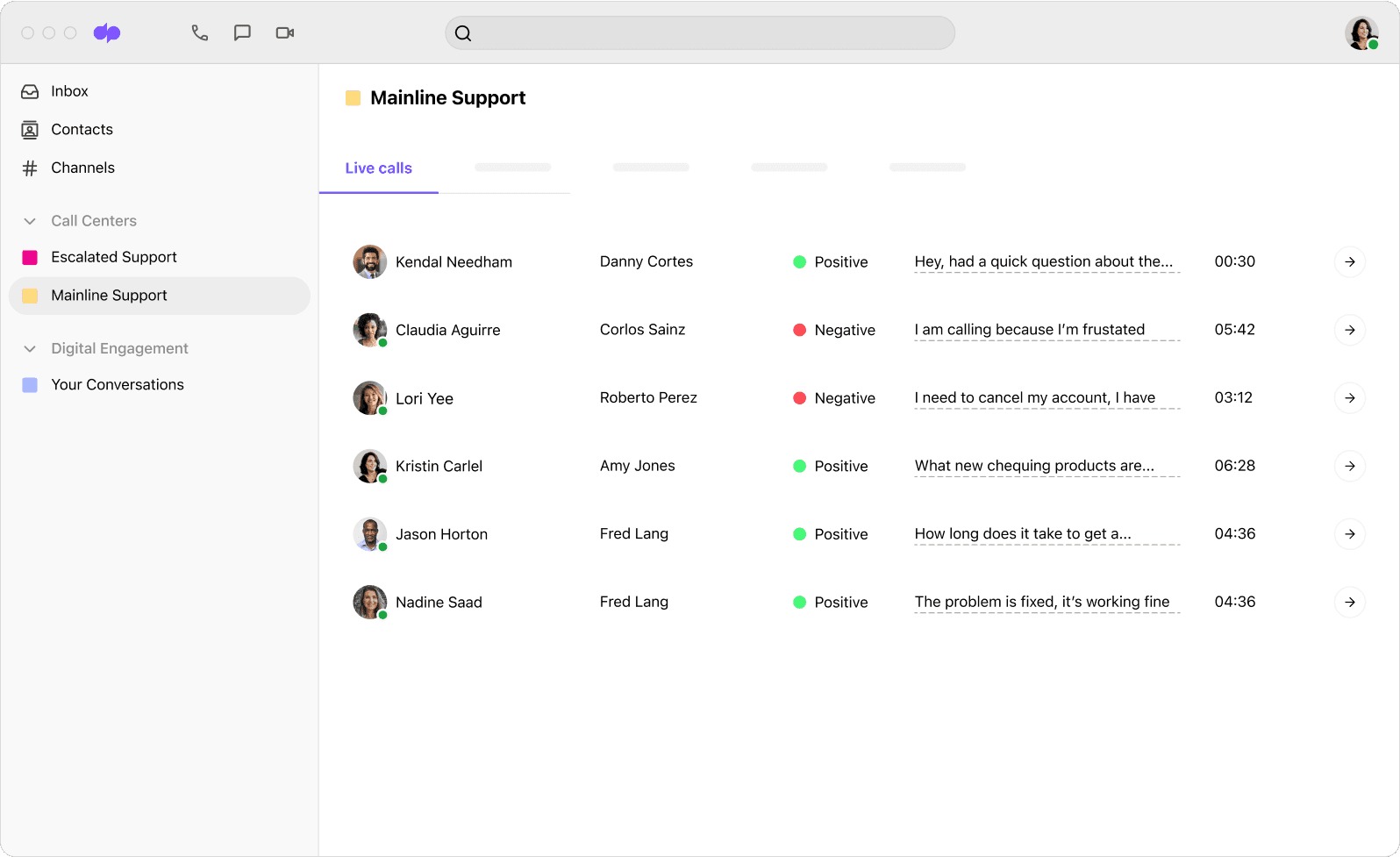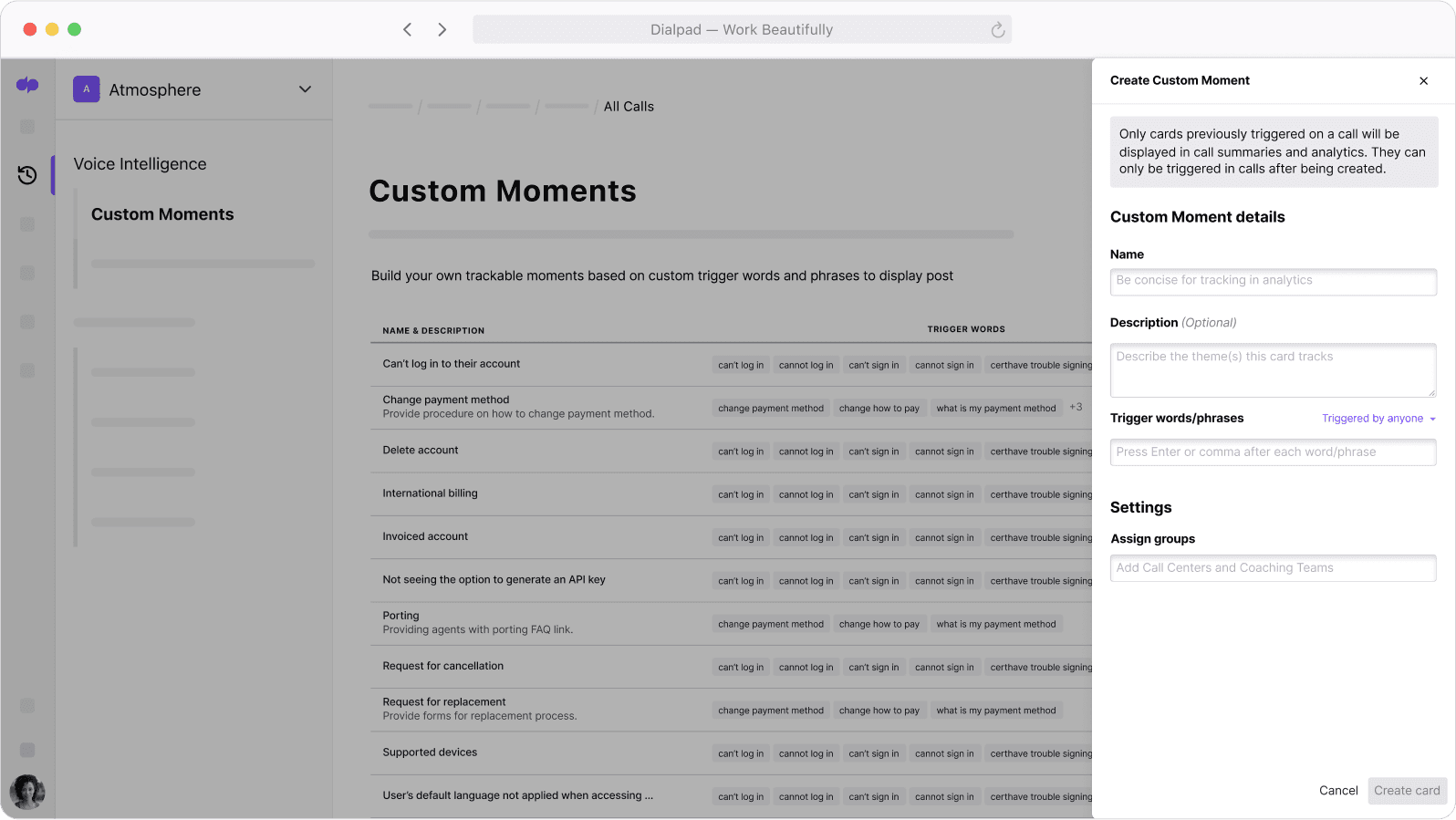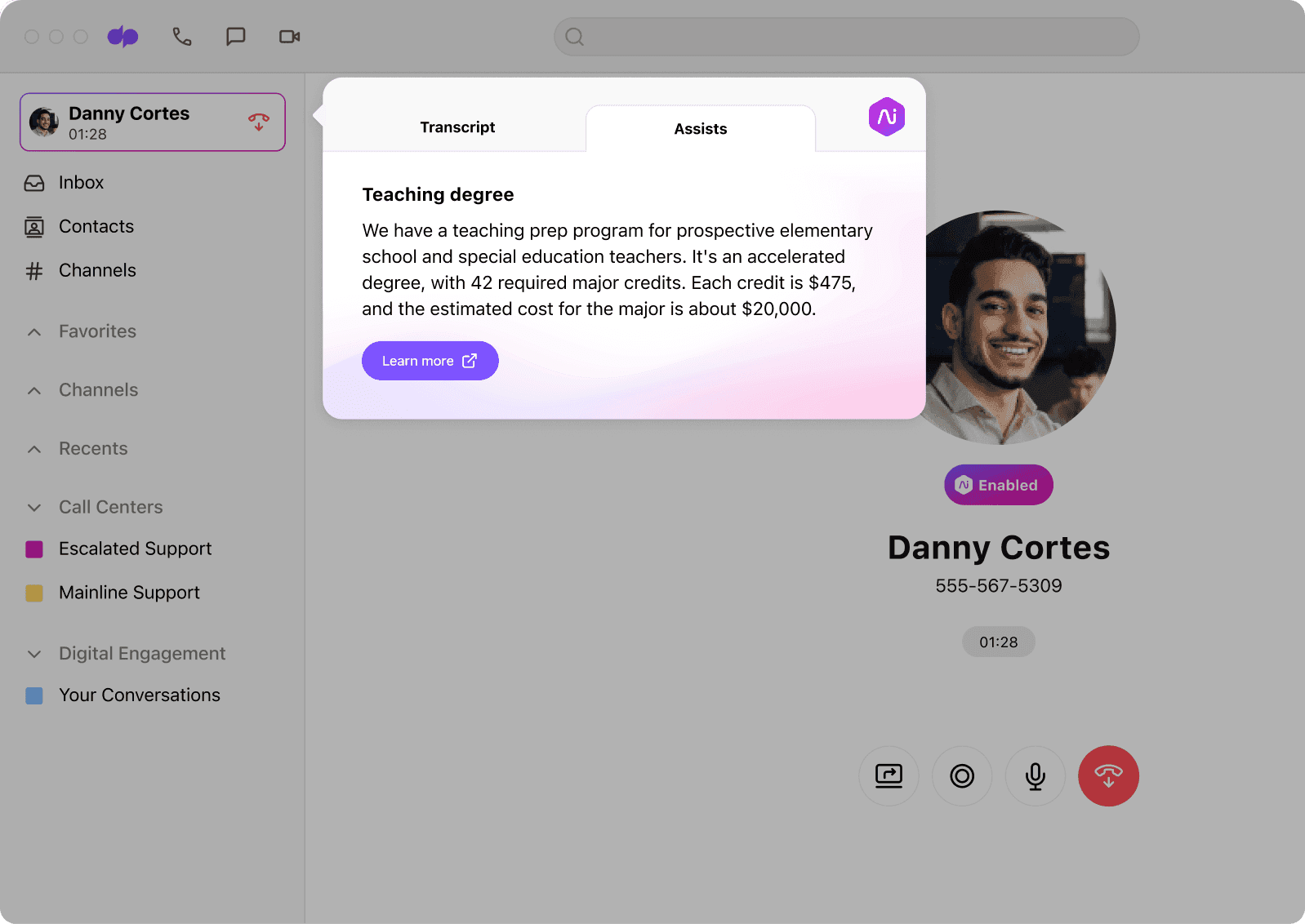AI for bilingual contact centers: Bridging the language gap

Manager, Data Annotation & Testing

Share
With over 67 million US residents using a language other than English as their primary language at home, and over one in 12 having limited English proficiency, it’s no wonder that companies need to consider providing support to this huge population—otherwise, they’re leaving an entire market untapped.
Luckily, advancements in artificial intelligence (AI) have opened up exciting possibilities to revolutionize customer support interactions in multiple languages. In this article, I delve into how AI-driven solutions are transforming bilingual contact centers, enhancing customer experiences, and empowering businesses to thrive in an increasingly interconnected world.
The challenges with bilingual contact centers
While providing support in a customer's preferred language has been shown to improve a variety of CX and customer loyalty metrics like CSAT, it does come with a unique set of challenges and considerations—namely for contact center managers.
An example: US companies that want to provide customer support in English and Spanish.
There are a variety of ways you can provide this support, including hiring bilingual or Spanish-speaking agents internally or outsourcing to a BPO. Whichever approach you choose to take, you’ll want to ensure that either your team or the contact center AI provider you choose has considered the following:
Cultural differences
With different languages, you’ll find different cultural influences from the speakers. This can show up in a variety of contexts within customer support, such as in how small talk is exchanged (or not exchanged!) or how profanity is used. It’s important to accommodate these cultural differences so that customers don’t feel a communication barrier.
Our Dialpad Ai team noticed an interesting difference between Spanish and English speakers when we were looking to build sentiment models for Spanish transcripts: we were having trouble finding a significant number of examples of positive and negative sentiments being expressed, even when looking at large volumes of data.

Overall, the occurrence of expressed sentiment was much lower in the Spanish data than in the English data. After looking into the data, we found that one potential explanation for this difference was that Spanish speakers were more likely to simply describe their situation, rather than describe their emotional state or reaction to that situation.
For example: “I keep calling and it’s the same thing every day.” vs “I am frustrated.”
In the first example, there is no sentiment being expressed, while in the second, a model would detect this phrase as negative sentiment. With Dialpad Ai, sentiment is a measure of a speaker expressing a positive or negative emotion through the words they use, and so this difference in speech led to an overall lower number of examples of sentiment within our Spanish data.
With sentiment being an important aspect to track in contact centers, this type of difference needs to be taken into account. In this case, contact center managers may need to track other factors, such as issue resolution, to identify unhappy Spanish-speaking customers.
Location differences
As with providing your products or services to any new location, when looking to provide support in an additional language, the potential to introduce location differences needs to be evaluated. While culture can’t simply be encapsulated as a list of beliefs or traditions, it’s clear that both location and culture are tightly connected.
For example, a Spanish speaker living in the US might refer to the US currency as "pesos" instead of "dollars," and the agent needs to be aware of this cultural nuance to overcome communication barriers.
Linguistic differences
Linguistic differences between languages you’re looking to support will play a major role in contact center support when it comes to using AI tools. In Spanish, for example, there are multiple linguistic variations to consider:
Text expansion & paraphrasing
It’s common practice in some languages, including Spanish, to use longer sentences (made up of subordinate clauses aka. groups of words that depend on the main idea but may or may not add important information) when expressing a single thought. This rearrangement and paraphrasing of thoughts can be more difficult to analyze due to the higher likelihood of mistranscription.
Word order
Word order plays a considerable role in the differences between English and Spanish. Differences in word order result in higher numbers of variations for expressing the same thought. When setting up Ai Live Coachs or Custom Moments in Dialpad, for example, a higher number of triggers would be required in Spanish compared to English to achieve the same amount of coverage (more on this later).
Verb conjugation & inflections
Similar to word order above, the presence of verb conjugation in Spanish is going to result in more variation being seen than in English to express a single thought.
Borrowings, foreign words, and code-switching
English has become the lingua franca in both business and technology, especially in North America. For this reason, bilingual or Spanish speakers in North America often have influences of English in the Spanish that they speak.
Loanwords are borrowed from English and are yet another way that additional variations could be needed when tracking Spanish data. This influence of English over other languages spoken in North America led to the use of Anglicism and borrowings in the Spanish language, for example.
Since a Spanish conversation can include English words too, or even entire sentences in English (this could happen when a fluent, bilingual speaker switches between languages unconsciously as well, which we officially define as "code-switching”), this is another fact that needs to be considered both in data analysis and keyword selection.
This gets even more complicated when loanwords such as the English term "app" get adopted by the Spanish-speaking community despite the fact it’s not an official Spanish term (something very common with technology-related terms) and they get assigned a grammatical gender arbitrarily: “el app” vs “la app.”
Providing bilingual customer support with Dialpad Ai
Conversational AI
As much as there are challenges to providing bilingual customer support, there are also a lot of solutions! As a first step, I’d recommend making use of conversational AI. Dialpad’s conversational AI can deflect common questions in order to reduce the demand on your support agents:

When supporting an additional language, this is a great way to provide self-service help to Spanish speakers without overwhelming agents and to reduce the amount of investment needed in additional language support.
DIALPAD TIP:
Conversational AI is not the same as chatbots. Chatbots are only able to respond to a predefined list of questions, so if your customer asks something in a different way, they will not get the answer they’re looking for. When working with multiple languages, having a solution that can respond accurately, no matter how a question is phrased, is more important than ever. Not only that, but businesses won’t need to spend inordinate amounts of time coming up with every single variation, for every single question!
Custom Moments
Want to see what customers are calling about? Contact center managers can use Dialpad’s AI-powered Custom Moments to track keywords and phrases being said on agents’ calls:

If you’re providing English support and want to add Spanish support to your contact center, you can start by creating a Spanish moment for each English moment that already exists in your contact center. Keep in mind that Custom Moments created in a Spanish-language call center will not fire on an English-language call center, and vice versa.
With the linguistic differences described above, your list of triggers for Custom Moments will likely be a lot longer in Spanish, so keep that in mind when developing them to ensure you aren't missing anything. This ensures that every instance is captured.
Here are some examples of how the linguistic differences in Spanish may impact your Custom Moment creation:
Let’s say you’re creating a Custom Moment to track when a customer is requesting a cancellation. In English, your triggers might look something like:
cancel my order, cancel the order, cancel an order
While in Spanish, it might look like:
cancelar mi pedido, cancelar mi orden, cancelas mi pedido, cancelar el pedido, cancelas el pedido, cancelar la orden, cancelar lo que pedí, cancelar lo que ordené, cancelar una orden, cancelar un pedido, cancelas un pedido
This example includes differences in:
Verb conjugation (cancelar/cancelas),
Text expansion and localisms (the preference in some regions for the words "orden" and "ordené" that seem to resemble the English word "order" more and attest to the influence of English in some Spanish-speaking communities)
That’s right, three triggers in English can result in a whopping 11 triggers in Spanish!
Additionally, you’ll want to consider if any of your moments only apply to one language or the other. For example, if you only provide certain products or services in English, you won't need an accompanying Custom Moment in Spanish.
DIALPAD TIP:
Tracking instances of customers connecting to support in the wrong language can be a helpful way to determine the efficiency of your self-service options. In Dialpad, that might look like creating a Custom Moment with triggers like "I don't speak English," “no English,” and "do you speak Spanish?"
Ai Live Coach
For the customers that do end up needing to speak to someone, Ai Live Coach is a functionality in Dialpad that ensures your agents have the right information, at the right time. Like with Custom Moments, creating a thorough list of triggers in Spanish will be a top priority when creating Ai Live Coach content for Spanish agents:

It’s important to create language-specific scripts to avoid having agents need to translate in real-time. It will also be important to determine if additional steps, such as location confirmation, may be required for agents working in Spanish.
Analytics
With Ai Virtual Assistant, Custom Moments, and Ai Live Coach content set up in both languages, you now have the building blocks in place to gather meaningful conversation analytics from your contact centers.
It’s important to look at your data as a whole, as well as break it down by language or location. This will help you better identify issues and coaching opportunities.
If agents are struggling in both languages to provide support on shipping issues, this may indicate a need for better training or documentation on this process. On the other hand, if issues are concentrated in a single language, it could indicate an issue with communications or copy in a particular language instead.
Being able to break your analytics down in this way will better allow you to determine the root cause, and quickly solve any issues that arise.
Wrap up
In conclusion, the integration of AI in bilingual contact centers marks a significant turning point in the customer service industry. The ability to cater to customers in their native languages not only fosters trust and loyalty but also opens up new markets and revenue streams.
As technology continues to evolve, we can expect even more sophisticated AI language models, natural language processing, and real-time translation capabilities, further enhancing the customer experience.
Dialpad Ai powers bilingual contact centers
See how Dialpad Ai can help you create personalized and culturally sensitive interactions. Book a demo of Dialpad Support, or take a self-guided interactive tour of the app first!
